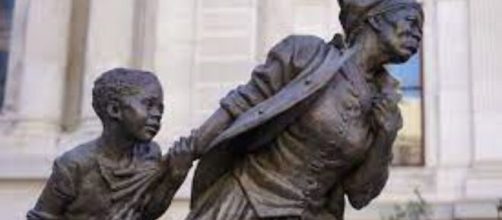Does an artist’s race matter when portraying a black woman? That’s the question dogging the city of Philadelphia as it plans a monument of Harriet Tubman, who escaped slavery and helped others to freedom.
Monumental mistake?
Local artists are complaining that their city did them wrong by commissioning a white artist, Wesley Wofford, for the monument, without soliciting proposals from others.
But why stop at the man's race? Wouldn’t Wofford’s gender also matter when portraying a woman? One look at the Bible story of Eve suggests gender matters. In the Book of Moses.
Eve is marked-out as the original sinner. And writers have drawn women as bad apples ever since.
I’m thinking of Lady Macbeth’s nasty sleepwalking scene after killing King Duncan when Shakespeare has her saying, “Out, damned spot...who would have thought the old man to have so much blood in him.”
Not that all men put women in a bad light. Looking at characters in literature through the ages, the results are mixed. Even in the same writer’s work, it’s mixed. Consider Tolstoy's novel “Anna Karenina,” believed to be the greatest novel ever written.
While Tolstoy makes Anna a sympathetic character by having her commit suicide to escape the confines of social conventions, he seems to fault her for not finding a reason to live – calling her jealousy a “stupid delusion.”
The good, the bad, and the ugly
The same mixed results can be found in visual art.
When it comes to male painters describing women, certainly, Picasso showed disdain in his many cruel portraits of Dora Maar. As she famously said, “All his portraits of me are lies.”
But Manet sure got a woman right in his painting “Luncheon on the Grass,” which showed a bare-skinned female picnicking in a Paris park with two clothed men. Far from a pin-up, she glares back at you, as if you’re interrupting her lunch.
It was her active participation in the scene that shocked Napoleon into calling the painting “indecent.” You can be sure it wasn’t the nudity that shocked him. There’s too much of that in French painting. It was the woman’s lack of reticence.
Of course, gender doesn’t need to dictate the commissioning of an artist.
Why should race be any different? Yet, when Mexico City chose sculptor Pedro Reyes for a monument to native women, Mexican artists protested, saying that the commemoration should be given to a woman.
The complaints were not only about Reyes’ gender but also about his ethnicity. He wasn’t a native Mexican. If you follow that logic, all art commissions should only go to the indigenous.
So, to answer the question, do you have to be female to portray a female, you have only to remember Maggie Hambling’s failed statue of feminist leader Mary Wollstonecraft installed in a London park without a stitch.
As for the protest against the city of Philadelphia’s choice of a white artist to commemorate Harriet Tubman, I’d answer with another question.
What do you think of Wofford’s statue?
Don’t you like the way Tubman’s 9-foot-tall figure steps forward to represent not only her escape from slavery but also her continuing effort to free others?
Don’t you like the metaphor of a strong wind seen billowing Tubman’s clothing to represent her pushing back against the forces imperiling her 13 missions to save her fellow slaves?
BTW, I sided with those Mexican artists objecting to Reyes, but not because of his gender or ethnicity. His commemoration was a hideous disembodied head. Those objecting to Wofford need a better reason than the color of his skin.


